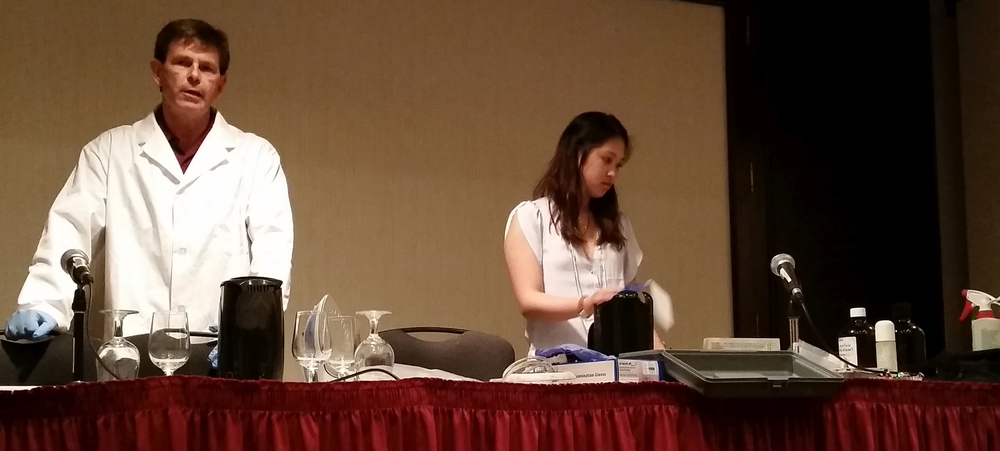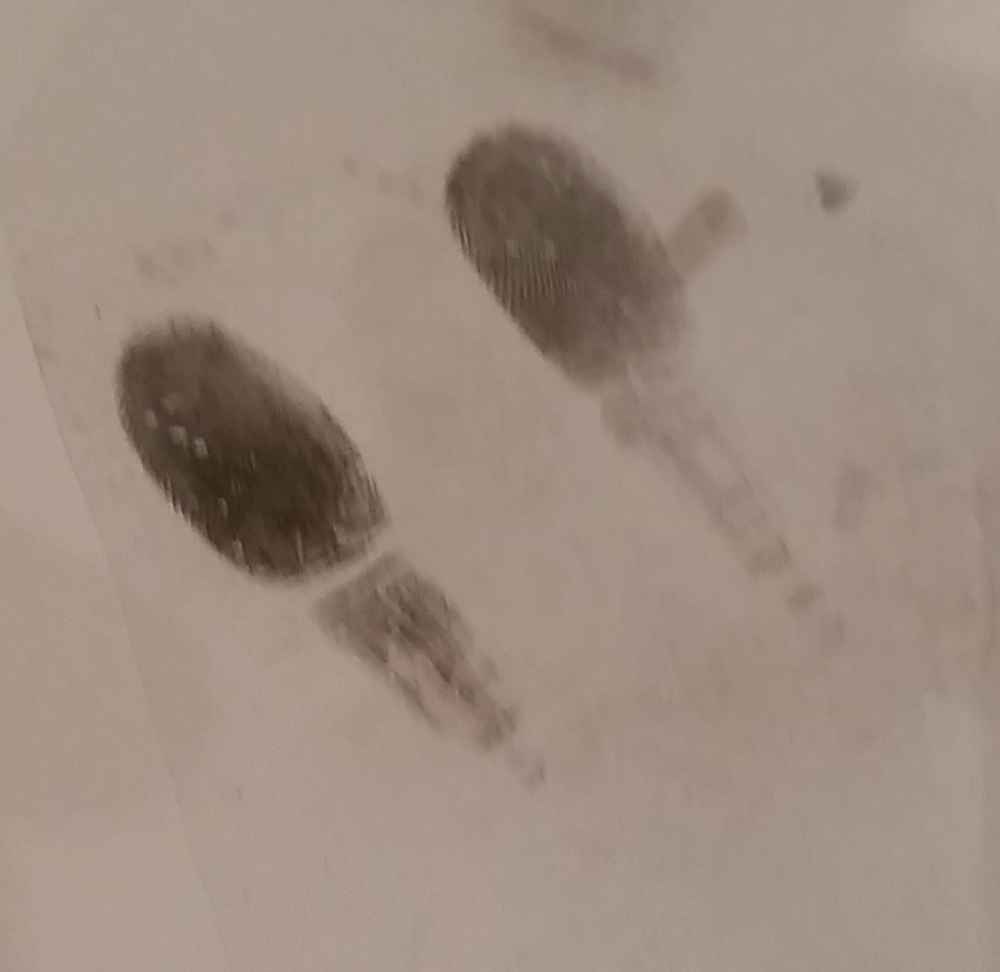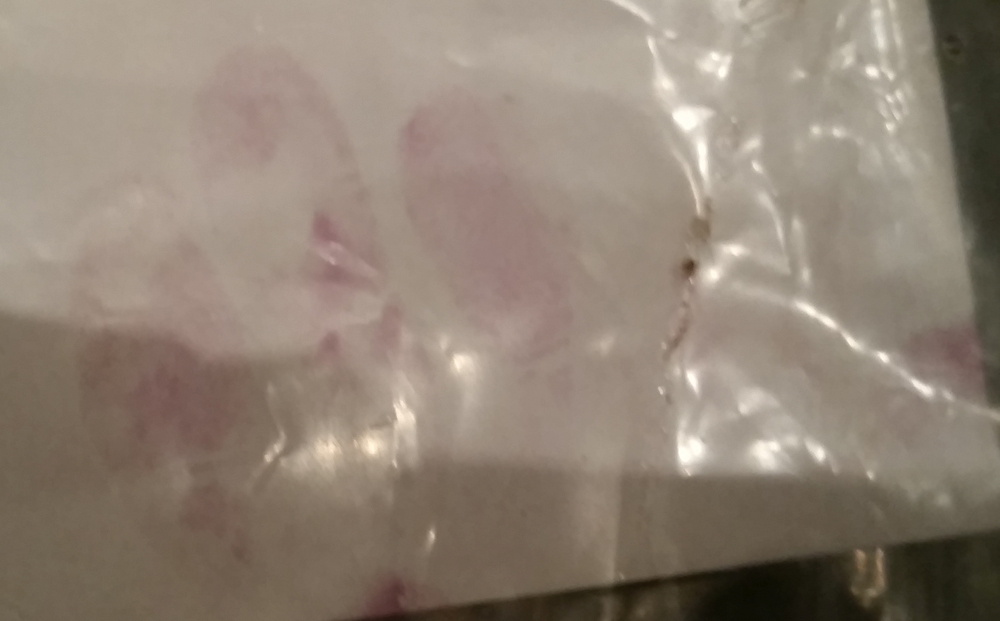Forensics 101: Fingerprinting Techniques
/
Today I’m continuing with my series of session reviews from Bloody Words XIII earlier this month in Toronto. I was interested in a session called CSI: Toronto, but when retired forensic identification specialist Wade Knaap arrived (with his graduate student apprentice) and started pulling out bottles of chemicals, I knew we were in for a treat. Sidenote—as a practicing scientist, I couldn’t help but wince every time Wade picked up his Tim Horton’s coffee in his gloved hand to take a sip. Just…no.
A Detective Constable for many years with the Toronto Police Service, Wade is now retired and teaching forensic identification at the University of Toronto. He spent an hour teaching us some of the tools of the trade when it came to fingerprint identification, specifically with latent prints—prints that are invisible to the naked eye until something is used to develop them.
First he dealt with fingerprints on a porous surface, i.e. paper, thermal cash register bills, currency.

Black magnetic powder: Investigators use a magnetic wand to pick up the fine magnetic powder (the powder comes in many shades, so there is always a contrasting shade available no matter what the background colour). The powder is gently swiped in a ciruclar motion over the latent print. The moisture in the print attracts the powder and the latent print is revealed. Unfortunately, any moisture will attract the powder in the same way, so if there is a latent print on a bottle with beer splashed over it, the powder will stick to the entire bottle. If a latent print is successfully detected and isolated, it can be lifted with tape to be photographed and entered into evidence.

Ninhydrin: This chemical reacts with the amino acids in fingerprints to produce a purple colour. A paper with a potential print is soaked in ninhydrin and allowed to air dry. Then the paper is exposed to steam. Any prints present will turn purple. These prints can then be further enhanced with a light source and photographed.
Wade then moved on to non-porous surfaces like a wall or solid object.
Cyanoacrylate (superglue): This is a popular one with the current forensics shows. You see them put an object with a potential print into a airtight box with a small tray of water and some superglue on a heated plate. As the plate temperature rises, the superglue vapourizes and the gaseous glue particles bind to the protein and amino acids in the fingerprint, polymerizing and plasticizing the print, creating a three dimensional permenant version. This procedure is very useful on handguns, where the gun oil required for regular maintenance would produce an extremely high background with most fingerprinting powders. If a dye is added to the superglue, a forensic light can be used to reveal the fingerprint. If the sample is in the field and can’t be moved into the lab, a portable cyanoacrylate torch can be used at the scene. However, great care must be taken as the temperature to vaporize the superglue is only somewhat below the temperature to produce deadly cyanide gas.
Amido black: This chemical is used solely for blood impressions that are too faint to see clearly or use for identifcation purposes. Faint impressions are sprayed with amido black and then the reaction is chemcially stopped. After a final rinse with water, the formerly faint impressions are a vivid permenant black.
Some fun facts about fingerprinting:
Luminol is simply a blood locator that enhances small amounts of blood. It does not give big glowing prints like you commonly see in crime shows.
Light sources can be very useful in finding bodily fluids. But unlike how this technique is fictiously used in crime shows, while it does light up semen or vaginal fluids, it will never light up blood spatter.
None of the above tools are able to pull a reliable fingerprint from a live person without transferring that print first; there’s simply too much moisture. However you can do this from a cadaver using either magnetic powder or a process of iodine fuming and silver plate.
Canada’s fingerprint database is run by the RCMP nationwide allowing for countrywide comparison. However, each state in the United States runs its own system, so to search outside an individual state, investigators must apply for national searches. A reciprocal agreement exists between Canada and the U.S to allow for open access for print searches between the two countries. Outside of Canada and the U.S., application must be made to Interpol for further searches.
There are three types of prints: a deposited print (like a latent print from oily fingers), a takeaway impression (where, for instance, a dusty surface is touched and the dust is removed only from the point of contact), or a molded impression (if fingertips touch wet paint, leaving a 3D impression of the print behind).
Canada recently issued new dollar bills made of polymer instead of paper. Porous techniques no longer apply to these new bills; instead, the superglue fuming technique must be used to develop latent prints.
Unlike in CSI, overlapping prints cannot be taken apart and put back together to make a full print with multiple points of comparison. When prints overlap, the only parts of the print that are usable are the sections that are completely isolated and not in contact with any other print. This greatly decresases the chances of successfully identifying the print.
Next week, I’ll be back with my final forensics session review when I’m going to talk about cybercrime and the new threat presented by Bitcoin.




 30.8%
30.8%